The localization of metabolic disorders and the decay of glycoproteins in the lumbar intervertebral discs, the bodies of the vertebrae, their articular surfaces and ligaments are found in 90% of cases of all pathological changes in the spinal column with the general name of osteochondrosis.That is why questions about osteochondrosis of the lumbar spine - symptoms and treatment available at home, prevail over all the others related to this pathology.
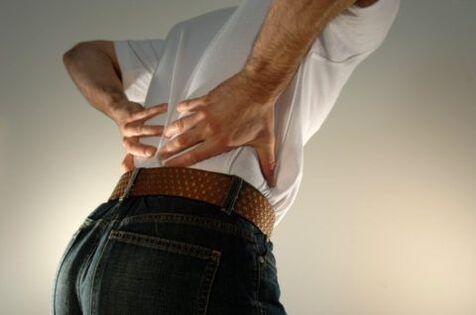
By what signs can you independently determine the onset of the development of an irreversible disease and in what methods can it stop its further development?
Signs of osteochondrosis in the lower back
The progress of the pathology of osteochondrosis proceeds in 4 stages
- Osteochondrosis-Degenerative-dystrophic changes in the ring plates and a change in the configuration of the jacket nucleus located inside the intervertebral disc.
- Protency of the lumbar region-Excessive protrusion of fibrous-chisky ring-shaped plates and the beginning of the destruction of the membrane of the pulp nucleus.
- Hernia- Rupture of the fibrous ring and the output of the gel -like nuclear mass outside the disk.
- Osteophytes- narrowing of the natural lumen between the vertebrae, the spread of the pathological process to the bone tissue of the vertebrae, their joints, ligaments and the periarticular muscles.
For information.It can accurately determine the degree of development of osteochondrosis and the spinal column in it - to make a diagnosis, only a doctor can based on an analysis of the anamnesis and images of CT and MRI examinations.
Symptoms of osteochondrosis of the lumbar spine, manifested at the first stage, can be as follows:
- lower back discomfort;
- increased sweating;
- a decrease in the sensitivity of the skin in the lower back, on hips, buttocks, in the foot and/or lower leg;
- spasm of the arteries of the lower extremities, leading to the feeling of chilliness in them, tingling and “running goosebumps”;
- peeling of the skin on the lower extremities.
The price that people who ignore these primary features are paid - the development of protrusions, hernias and osteophytes.They not only interfere with normal life, but also threaten with disabilities.
Osteochondrosis of the lumbar region - symptoms of pain
If, with cervical and breast osteochondrosis, the pain often gives to the hand,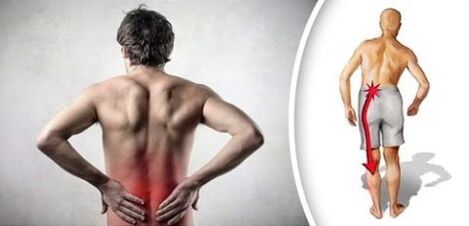 That pain with lumbar osteochondrosis radiates one, less often into both legs.
That pain with lumbar osteochondrosis radiates one, less often into both legs.
Acute lumbalgia
Sharp, unbearable, in most cases, bilateral pain and obvious muscle contracture in the lower back.Attacks can be repeated several times a year.
Chronic lumbalgia
The occurrence of several weeks (months), dull and aching pain, most often on one side of the back, at the level and below the waist.Pain syndrome occurs after a long -term fixation of the hotel in an uncomfortable pose or after hypothermia.
The beginning of movement after a long state of rest or sharp inclinations (turns, twisting) enhance pain.With repeated bouts, the localization of pain gradually expands to the sacral section, buttocks and leg.
Vasopastic reflex dystonia
The pain in the lower back and leg is accompanied by a chill in the lower part of the limb.After physical stresses, hypothermia can disappear, and may intensify.
Vasodilator reflex dystonia
The pain syndrome takes place with the development of heat in the limbs.During and after physical activity, the hypertherm of the skin becomes very strong.
Radiculite and radiculopathy - radicular syndromes
Characteristic of edema, shooting-fast pain and shelters in the lumbar region, and irradiation of pain in the leg are characteristic.
Their manifestation depends on the location and degree of damage to the intervertebral discs:
- L1: l2 - the front and inside of the thigh hurts;
- L2: L3 - irradiation in the upper thigh and inner area of the lower leg, the absence or decrease of reflexes in the knee joints, the development of scoliosis in homolateral type is possible;
- L3: L4 - the pain in the lower back is free, while it spreads along the thigh in the front and in the inside to the knee and slightly lower, an increased knee reflex occurs, and the knee itself is moderately hurt;
- L4: L5 - sharp, shooting pain in the lumbar region cause its stable fixation of the pathological configuration and skewing of posture in the form of “protective poses”, the spasm of the pear -shaped muscle determines the soreness during the thigh and causes the symptoms characteristic of inflammation of the sciatic nerve: the pain in the foot and in the foot, the muscle tone is reduced in the foot and in the footThe buttocks and limbs, the power of the Achilles of the tendon is weakened, the thumb is poorly extended, and the development of intermittent chroma is possible.
Lumba -ilgia and radiculoichemia
The main symptoms of osteochondrosis of the lumbosacral spine-L5: S1 inherent in the III stage of the flow of pathology:
- Discogenic pain from the lower back radiates into one or both legs by the type of pain syndrome and a decrease in reflexes inherent in damage to L4: L5;
- squeezing the arteries leads to loss of skin sensitivity;
- the simultaneous manifestation of muscle-tonic, neurotrophic and vegetative-vascular syndromes;
- The prolapse of the disk causes the development of the “horse tail” syndrome - the unbearably acute pain syndrome in the lower back is accompanied by numbness of the groin, as well as a violation of the work of the large intestine and organs located in the pelvis, up to urinary incontinence;
- Functional disorder of the gastrointestinal tract, liver, as well as exacerbation of chronic diseases, for example, colitis, hemorrhoids.
Attention!There are quite a lot of tips from the healers who are convinced that osteochondrosis is the deposition of salts on the spine, and folk “medicines” can dissolve and remove them from the body without a trace.Since osteochondrosis has a different mechanism of development and current, each such instruction is 100% to get rid of osteochondrosis is a charlatan that can cause tangible harm to health.
Treatment of osteochondrosis of the lower back
For the prevention of osteochondrosis with sedentary work, it is necessary to perform 10-minute “unloading” exercises, a complex of which must be performed once per hour.
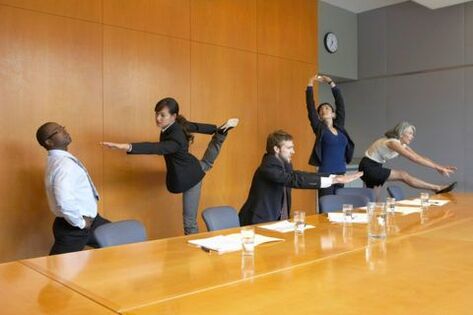
Therapy of lumbar osteochondrosis is always carried out in the complex, but also depends on the stage of development of the disease:
| Methods of treatment | The degree of osteochondrosis | ||
| I | II | III-IV | |
| Surgical intervention | - | - | + |
| Anesthetic drugs | + | + | + |
| Non -steroidal anti -inflammatory drugs | - | partially | + |
| Hormonal drugs and antidepressants | - | - | + |
| Chondroprotectors | Efficiency is not proven | ||
| Vitamin therapy (group B) | + | Not effective | |
| Massage | + | + | + |
| Manual therapy | + | partially | - |
| Swimming, hiking + | + | + | |
| Running cowardice and jumping exercises | partially | - | - |
| Dynamic gymnastic exercises | + | + | partially |
| Static yoga exercises | + | + | + |
| Classes on simulators with weighting | + | partially | - |
Important!An unavailable component of treatment of osteochondrosis at any stage is the normalization and strict observance of drinking daily regime-1.5-2 l of pure water per day, as well as optimization of the diet in order to reduce body weight and further maintaining the body of the body of the body from 18.5 to 24.99, which is calculated by the formula (kg) divided into iconic growth(m).
Modern medicine has not come up with a medicine that would cure osteochondrosis.If you find the first symptoms of osteochondrosis, do not lose precious time - start moving more and eat right!Today these are the only effective measures that can slow down or stop the progression of the disease.
The daily practice of two simple yoga positions will help even lazy to stop the pathological processes that develop in the lower back.Since these “magical” exercises are simple and are performed static enough to look at the photo.
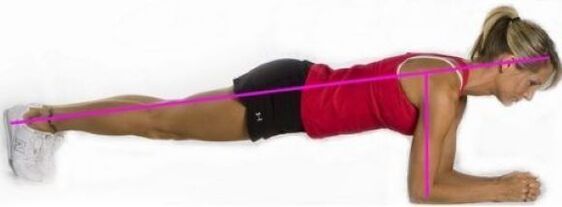
The bar must be kept from 10-15 seconds, gradually increasing the time to 3 minutes, not forgetting about rhythmic breathing: inhale with his nose, exhale through the lips folded with a tube.
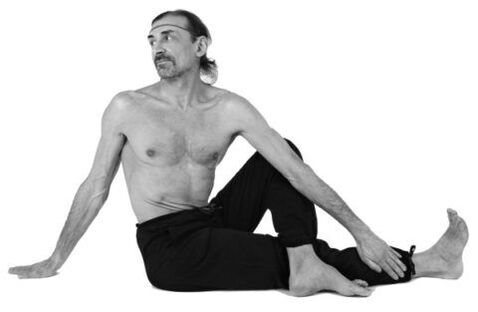
During this twisting of Marichiasan, lasting from 15 seconds to 1.5 minutes, performed in each direction, it is necessary to make light booze of the spine that will help insert the vertebrae to the place without resorting to the services of a manual therapist.
Osteochondrosis of the spine is inevitable, because even in the absence of aggravating causes: a hereditary predisposition, a inactive lifestyle, a profession using heavy physical labor, an excess of the body, suffered injuries - its occurrence will be caused by physiologically aging of the body and natural dehydration of the nuclei of the intervertebral discs.Only a healthy and active lifestyle can slow down these processes, which must be strived to maintain until old age.

















































